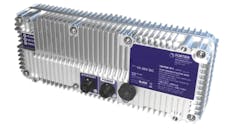Radar technology has long been an essential electronic tool for manned military aircraft, warning of oncoming threats in distant airspaces. It may soon prove to be as vital for unmanned aircraft systems (UASs) used for military operations. Flight experiments recently conducted at a Boeing Co. subsidiary, Aurora Flight Systems, in Manassas, Va. showed great promise when combining a small available airborne radar system to existing airborne electronic safety systems.
In the experiment, a small airborne radar system was added to an Inexa Access ground detect and avoid system from Boeing subsidiary Insitu, with the intent of helping the ground-based operators of UAS aircraft to better visualize the air space and air traffic of the unmanned aircraft they are piloting. The experiment involved outfitting a Centaur aircraft (which is an optionally piloted vehicle) from Aurora with a small radar system to serve as a surrogate for a ScanEagle3 UAS aircraft from Insitu.
A second Centaur aircraft and a Cessna 172 Skyhawk single-engine aircraft from Cessna Aircraft Co. were used as enemy aircraft in the same space as the radar-equipped UAS aircraft to evaluate its responsiveness to collision-type flight patterns from the other aircraft. GPS data from all three aircraft allowed the team to determine the accuracy of the aircraft location data derived from the airborne radar.
These experiments demonstrated the effectiveness of adding even a small radar system to the existing safety systems in the process of developing safer autonomous UAS flight systems. “Boeing’s airspace access solution is already used around the world,” said Jim Bray, project manager. “This flight experiment adds a small airborne radar to improve the comprehensive safety case we can offer our customers.” The small radar system was developed by Fortem Technologies, a supplier of advanced radar systems for manned and unmanned aircraft, highly focused on improving airspace safety by means of advanced drone detection.
About the Author
Jack Browne
Technical Contributor
Jack Browne, Technical Contributor, has worked in technical publishing for over 30 years. He managed the content and production of three technical journals while at the American Institute of Physics, including Medical Physics and the Journal of Vacuum Science & Technology. He has been a Publisher and Editor for Penton Media, started the firm’s Wireless Symposium & Exhibition trade show in 1993, and currently serves as Technical Contributor for that company's Microwaves & RF magazine. Browne, who holds a BS in Mathematics from City College of New York and BA degrees in English and Philosophy from Fordham University, is a member of the IEEE.

